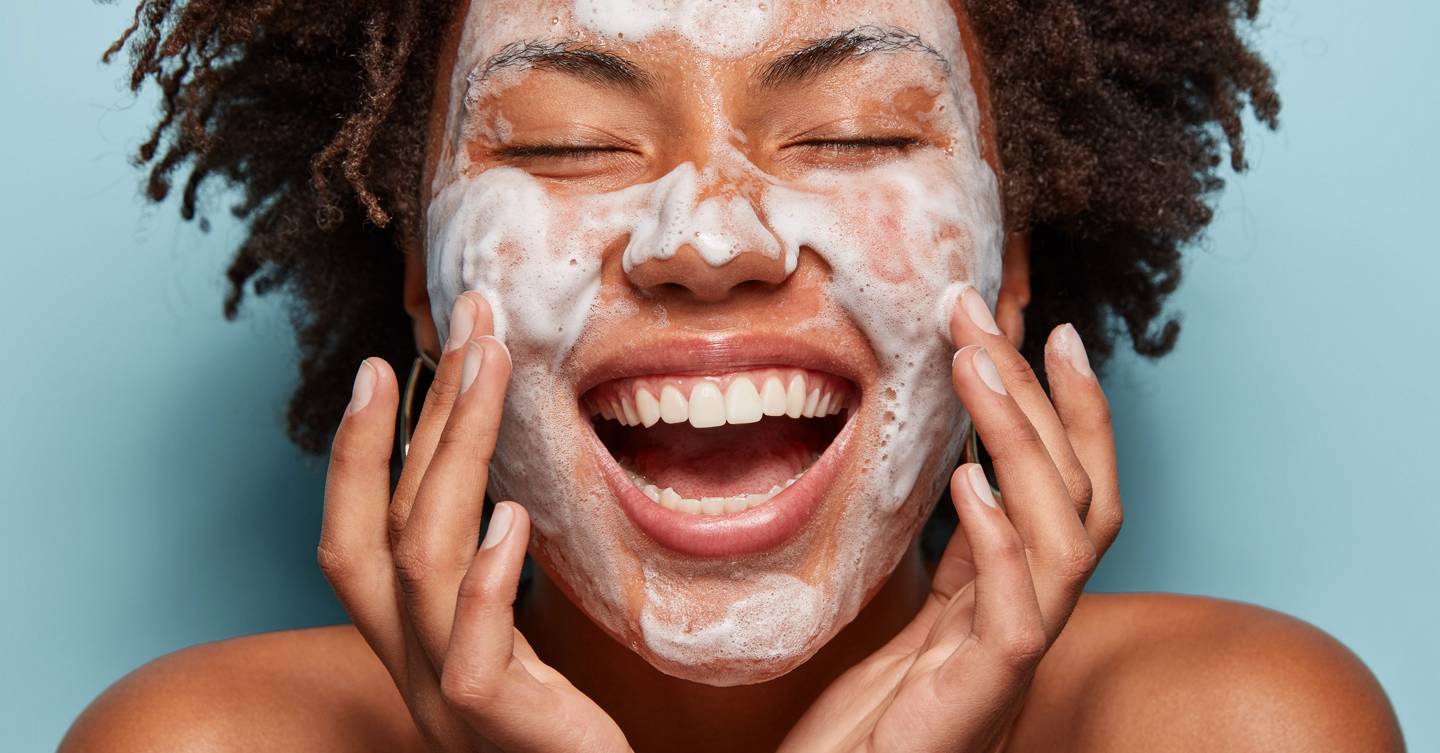You’ve researched every imaginable skincare ingredient and scoured the shelves of your local beauty hall to collate a carefully considered range of products to use in your everyday routine. The problem is, no one has told you exactly how you should be using them and once you get them home. It’s all a matter of guesswork as to how often you use them, how much product you use each time and which of the various application methods you use (a cleansing brush? A gua sha? Who knows!).
This is never more true than in matters of cleansing. Our cleansers are the foundation of our skincare routines and come in a vast array of textures and types, often incorporating different active ingredients to address a multitude of skincare concerns. Get it right and you’ve created the ultimate blank canvas upon which to apply subsequent skincare. Get it wrong, and you’ve got off to an inflamed, irritated start that’s only going to get worse.
Ultimately, it comes down to whether you’re under-cleansing, or over-cleansing. Under-cleansing results in makeup residue, excess oil and dirt being left behind on the skin and often causes breakouts. Over-cleansing can strip the skin of natural oils as well as cause redness and sensitivity that can get worse as your skincare routine goes on.
According to CeraVe’s second ever Global Skin Cleansing Survey, a whopping 55% of people tend to over or under wash their faces, and experts warn both could be as bad as each other.
Here’s everything you need to know to get the perfect cleanse every time…
Skip the double cleanse
According to consultant dermatologist, Dr Alexis Granite, there is little need to double cleanse skin and doing so could cause more harm than good.
“For me, one cleanse in the morning and one in the evening should be more than sufficient if you’re using the right products for your skin and cleansing deeply and thoroughly every time,” says Dr Granite.
Leave the active ingredients to your serum
With the skincare industry’s growing obsession with ingredients like retinol, glycolic acid and vitamin C, many cleansers now contain pretty potent active ingredients.
However, Dr Granite advises that it might be better to keep your cleansing simple, especially if you have sensitive skin or conditions like rosacea or eczema. “It can actually be more effective to keep your cleansing step super simple and leave the targeted treatments and ingredients for the steps which follow such as serums and moisturisers,” she says.
Use lukewarm water
Many people abide by the rule of using hot water to open the pores at the start of their cleansing routine, and cold water to close pores at the end. However, according to Dr Granite, it’s best not to switch to extremes and instead opt for a best-of-both approach.
“When you cleanse your face, you should ideally
use lukewarm water. Water at this temperature will activate your facial cleanser to properly remove product build-up, dirt and grime on your skin whilst also protecting the skin’s natural oils.”
Squeaky clean isn’t necessarily a good thing
According to CeraVe’s Global Skin Cleansing Survey, 31% of respondents said their skin felt “squeaky clean” after cleansing. It may sound like a positive sign, but it could be a red flag that you’re over-cleansing and you skin has been stripped of its natural oils and the skin barrier has been impaired.
“Our skin barrier works as a protectant and if it becomes damaged this may allow external aggressors, irritants and allergens to penetrate the skin and cause issues such as skin sensitivity and dermatitis,” says Dr Granite.
